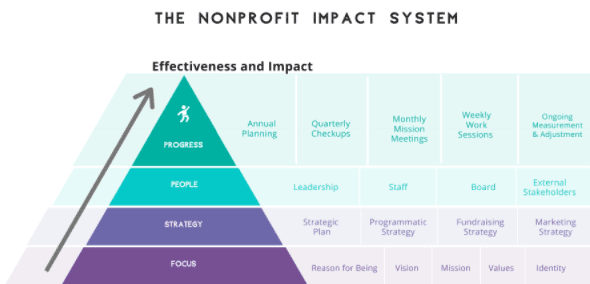Gathering consumer insights about product launches, competitors and even advertisements has been a business best practice for years, and allows companies to make strategic decisions based on customer feedback. Many nonprofits and funders strive to gather the same types of insights from their multitude of stakeholders, but often leave out the most important one: their beneficiaries.
While it can be a challenge to get feedback from those your organization serves, it is absolutely critical to your nonprofit’s success.
According to an article in SSIR, “Listening to those who matter most, the beneficiaries,” the author explains, “In bypassing the beneficiary as a source of information and experience, we deprive ourselves of insights into how we might do better—insights that are uniquely grounded in the day-to-day experiences of the very people the programs are created for.”
What makes stakeholder engagement even more complex in the nonprofit setting is the distorted power dynamic, where the person receiving service often isn’t the same person paying for it. And, while feedback from your beneficiaries is absolutely critical, it’s also important to get insights from your organization’s other stakeholders to inform your decisions.
The good news is, according to the Center for Effective Philanthropy (CEP), 89 percent of nonprofits are collecting feedback from their clients during and after the provision of services, however only 39 percent of them always do so. Let’s make that 100 percent, and here’s why. It leads to:
A greater understanding of client and community needs
When you’re in touch with your beneficiaries, you’re able to more deeply understand the challenges they face and how your organization, programs and services can align to meet their needs. Creating opportunities for beneficiaries to provide their experiences and perspectives allows you to think more deeply about program design and your nonprofit’s overall strategy for meeting them where they are and supporting them in reaching their goals. According to the CEP study, 61 percent of the nonprofits they surveyed use feedback from their beneficiaries “to an extreme extent” to improve their work.
[bctt tweet=”When you’re in touch with your beneficiaries, you’re able to more deeply understand the challenges they face and how your organization, programs and services can align to meet their needs.” username=”ProsperStrat”]Establishing relationships, trust and better outcomes
Because the power dynamic at nonprofits can be distorted, it’s more important here than anywhere to establish relationships and trust with your nonprofit’s beneficiaries, so they feel they can share their honest feedback. It should never be about who pays for the services, rather the outcomes that are achieved in service of your mission. Those outcomes start and end with the individuals your nonprofit exists to serve. They are and should be the heartbeat of everything you do.
Research in the medical field supports this opinion, “Patient-centered communication was correlated with the patients’ perceptions of finding common ground. In addition, positive perceptions (both the total score and the subscore on finding common ground) were associated with better recovery from their discomfort and concern, better emotional health 2 months later, and fewer diagnostic tests and referrals.”
Like health care providers do with their patients, taking time to hear from your nonprofit’s beneficiaries and getting their feedback not only builds trust, it is essential to helping them and, as a result, your nonprofit, achieve better outcomes.
Innovation
Just because “it’s the way it always is,” doesn’t mean it’s the way it always has to be. Listening to your beneficiaries about their challenges, what they need, and what makes them feel good can lead to innovation at every level of your nonprofit, from the spaces where you provide services to your programs themselves.
I was on the phone with a nonprofit leader this morning who was excited about the opening of a new community center for individuals experiencing homelessness. It was designed with beneficiary input.
“It’s a beautiful space. Everything here is light and bright and new, like a modern co-working space. We want people who visit us to feel really good when they’re here,” she said. Then she went on to say, “You know, there’s this ‘feeling’ you get when you walk into a nonprofit space that I didn’t want to have here. Why should our clients have to settle for a subpar experience just because we’re a nonprofit?” They shouldn’t. And, just as they did for this nonprofit, your beneficiaries’ opinions can lead to innovations that shape where and how you deliver the best programs and experiences possible for those you serve.
Empowering beneficiaries to have a voice
By engaging beneficiaries in your strategic planning, your program planning and your marketing and communications, you’re empowering the individuals you serve to have a voice in the programs that directly impact their lives. This allows you to work with those who you serve to co-create opportunities for positive change, as opposed to assuming or prescribing (often one-size-fits-all) solutions.
The good news is that engaging your nonprofit’s beneficiaries can be done in a multitude of ways, before, during and after services are provided. Your process for doing so can include tactics such as surveys, listening tours, interviews, community convenings, focus groups and events, among other things.
Get Started With Our Nonprofit Strategy System™

